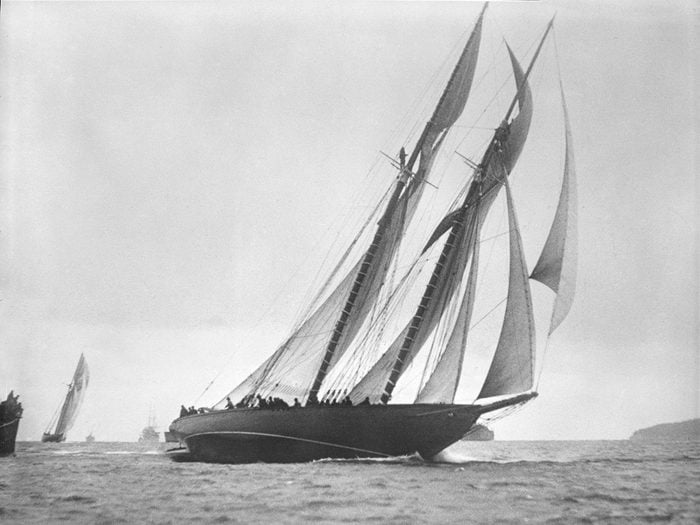
The Bluenose was built out of a desire to triumph
In 1920, the inaugural International Fisherman’s Trophy was held, pitting the fastest fishing schooner from Canada and the United States against each other in a highly publicized race. The U.S. team sailed to victory—and earned bragging rights for prowess in shipbuilding and racing. Wounded by the loss, the Canadian team vowed to claim the trophy the next year. It was then that William James Roué, a naval architect and resident of Halifax, was commissioned to design a racing schooner that would ensure their victory: the ship that would eventually be known as the Bluenose.
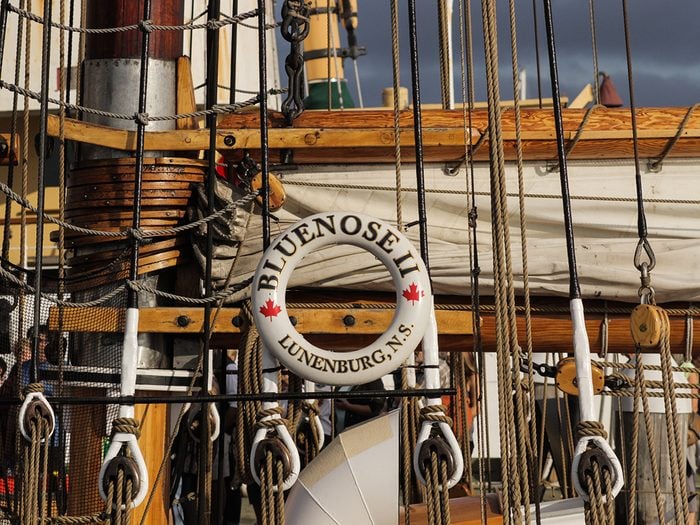
The origins of the term “Bluenose” are obscure
At the time, “Bluenose” was a common nickname for Nova Scotians. The term’s origins date back to the 18th century, where it may have referred to a type of potato grown in the region, or simply a joke about cold noses.
Test your knowledge of Canadian slang.
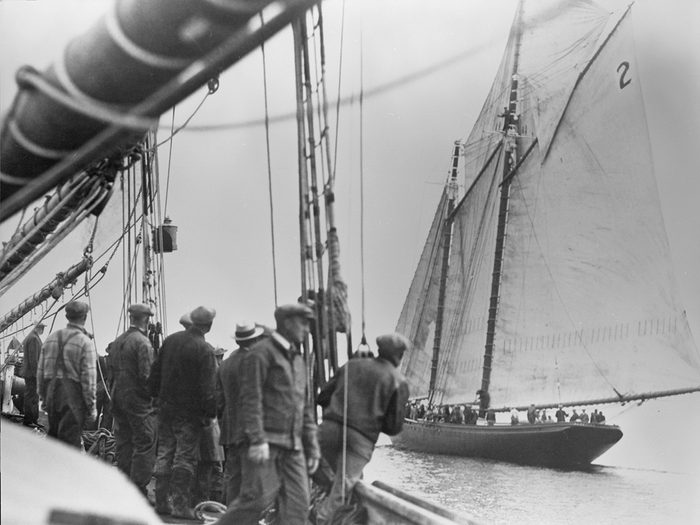
The Bluenose launched 102 years ago
Built in Lunenburg, Nova Scotia, the Bluenose was designed as a competitive racing schooner and fishing vessel, with large, white billowing sails attached to two tall masts. The ship was mainly made of local wood: pine, spruce, birch and oak, and measured 143 feet long.
The ship was launched with great fanfare on March 26, 1921. The honour of christening would be awarded to Audrey Smith, the 19-year-old daughter of one of the shipyard’s owners. There was some minor controversy because The Christian Women’s Group of Lunenburg didn’t want alcohol involved in the ceremony (they suggested grape juice instead), but it was ultimately a bottle of champagne that was broken over the Bluenose’s bow.
Don’t miss this gorgeous gallery of Canadian boat photography.
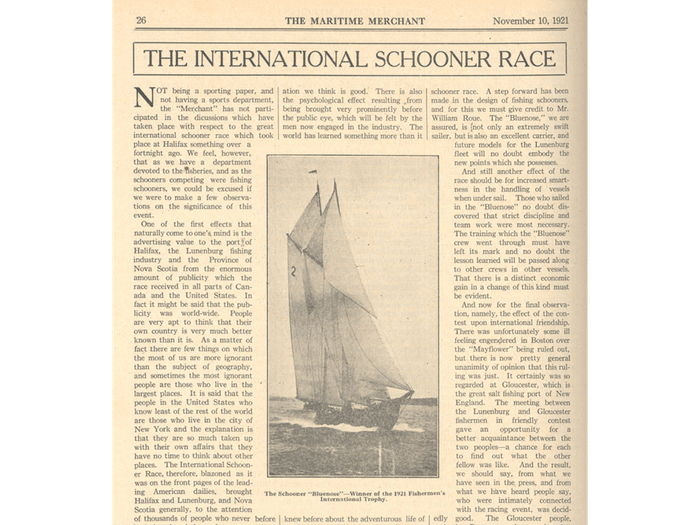
The Bluenose won 17 consecutive International Fisherman’s Trophies
The Bluenose was built to win the International Fisherman’s Trophy, and it did just that. For the next 17 years, the competitive racing schooner was undefeated, bringing much glory to Nova Scotia as well as Canada on an international level. It helped to secure Nova Scotia’s reputation for shipbuilding excellence and create a legacy that lives on today.
For more innovations worth celebrating, check out 10 Canadian contributions to space exploration.
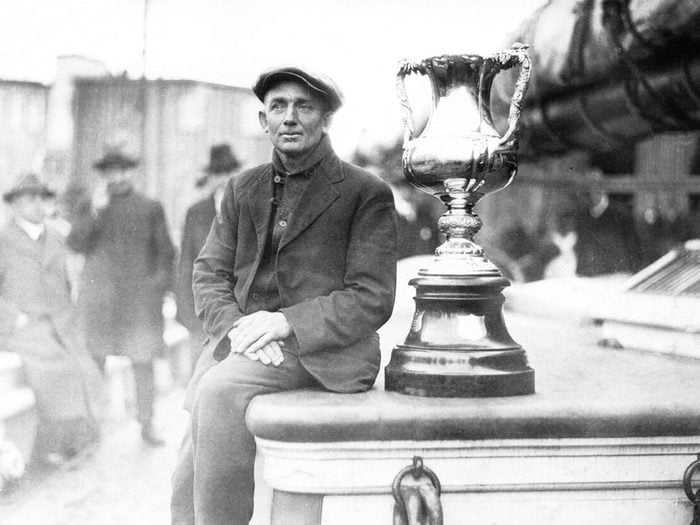
Angus Walters was the Bluenose’s longest-serving captain
The Bluenose was captained by one man, Angus Walters (who was also a partial owner) for the majority of its racing career. It was Walters who was at the helm from the first winning race up until the last one in 1938, in which the Bluenose was also victorious. In recognition for his achievements, Walters was awarded a number of honours, such as such as the opportunity to represent Canada in 1933 at the Century of Progress Exhibition in Chicago.
Here are more Canadian heroes you didn’t learn about in school (but should have).
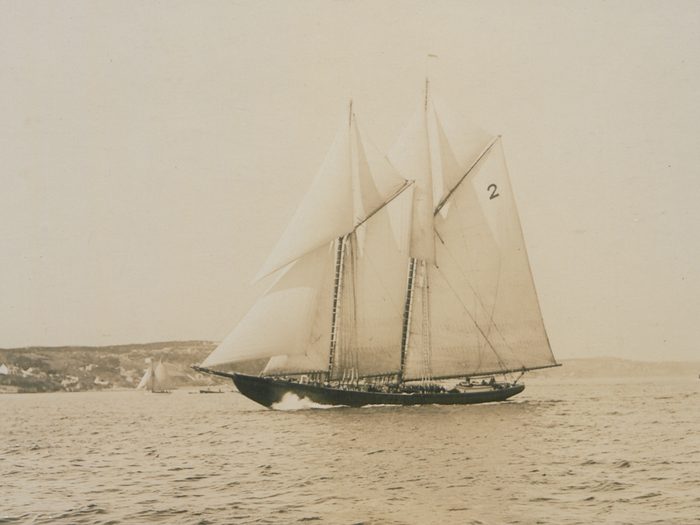
The Bluenose became a beacon of hope during the Great Depression
During the tough economic times of the Great Depression, Canadians needed a good news story to lift their spirits—and the Bluenose delivered. The ship’s unprecedented winning streak over the American competition helped to create a sense of civic pride, and served as a symbol of Canadian achievement and resilience in a difficult time. Earning the nickname “The Queen of the North Atlantic,” the ship even sailed across the ocean to take part in King George V’s Silver Jubilee celebrations in 1935.
Find out what it was like living through the Great Depression.
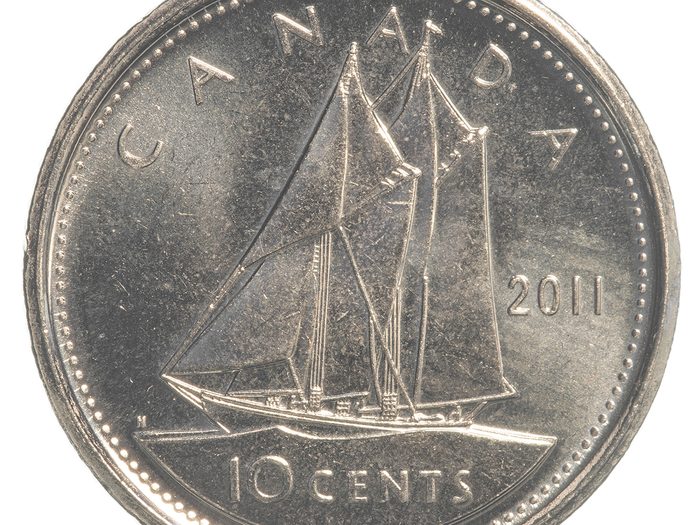
There was a debate over the Bluenose on the dime
In 1937, the Bluenose became permanently etched into Canadian culture with its debut on the 10-cent piece. Or did it?
While many interpreted it as the Bluenose—especially Nova Scotians eager to see evidence of their accomplishments on a national symbol—the artist behind the image, Emanuel Hahn, simply referred to his design as “a schooner,” and official documents from the Royal Canadian Mint called it “a fishing schooner under sail.”
The debate over the ship’s identity raged on for decades. Wilfred Moore, who served as Chairman of the Bluenose II Preservation Trust for 10 years, was part of a dedicated group of volunteers who examined archival footage, documents, family heirlooms, and old photos in order to prove what they knew to be true: the Bluenose was on the 10-cent piece. Armed with a large and solid body of evidence that proved their claims, the group lobbied the Mint. The clinching factor? The Bluenose’s “squarish” design, unique for a schooner yet seen clearly on the dime. In 2002, after six years of work by the group, the Mint announced that it was, in fact, the Bluenose on the 10-cent piece.
“It’s nice for some of these men who sailed this ship and are still with us. They can stick their chests out a bit and feel some recognition,” Moore said to The Globe and Mail.
Find out how O Canada became our national anthem.
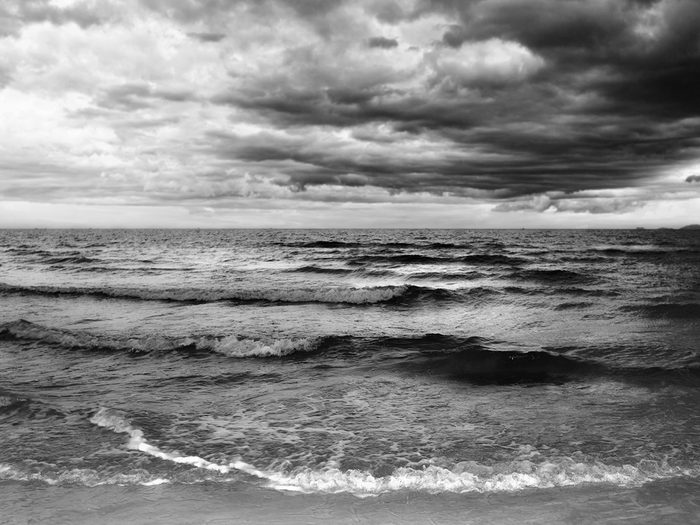
What happened to the Bluenose
During the Second World War, shipyards across the Maritimes were shut down, and long-standing races—including the International Fisherman’s Trophy—were cancelled. Suddenly redundant, the Bluenose was sold to the West Indian Trading Company in 1942 and put to work ferrying goods throughout the Caribbean. Its career as a freighter was to be short-lived. In 1946, tragedy struck: the ship hit a coral reef in Haiti. It was damaged beyond repair and sunk to the bottom of the sea, never to be seen again.
Read up on the 10 most famous shipwrecks in Canadian history.
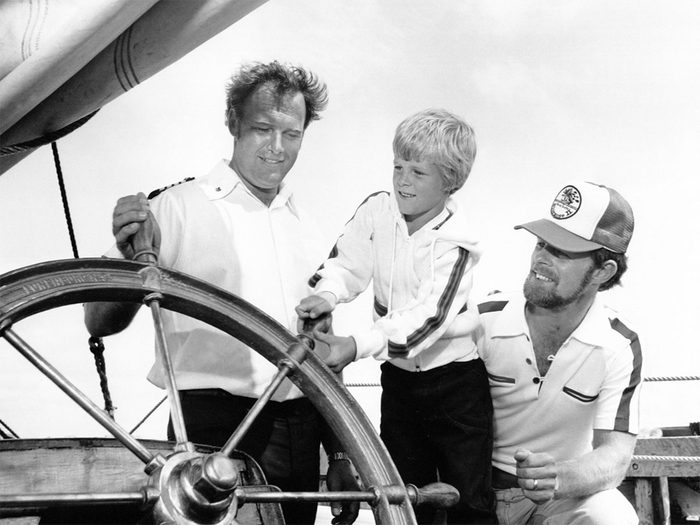
The Bluenose II launched in 1963
In 1963, the Oland family, owners of a brewery in Nova Scotia, decided to commission a new Bluenose, partly because it would be a fantastic way to advertise their new line of “Schooner” beer. The original shipbuilders of the Bluenose were consulted, and with the Oland family’s financial backing, plans to build the Bluenose II were underway. In the 1920s, the original Bluenose cost around $35,000 to build. The replica, which was completed on July 24, 1963, ended up costing nearly ten times that amount.
Put your knowledge of history to the test with our great Canadian trivia quiz.
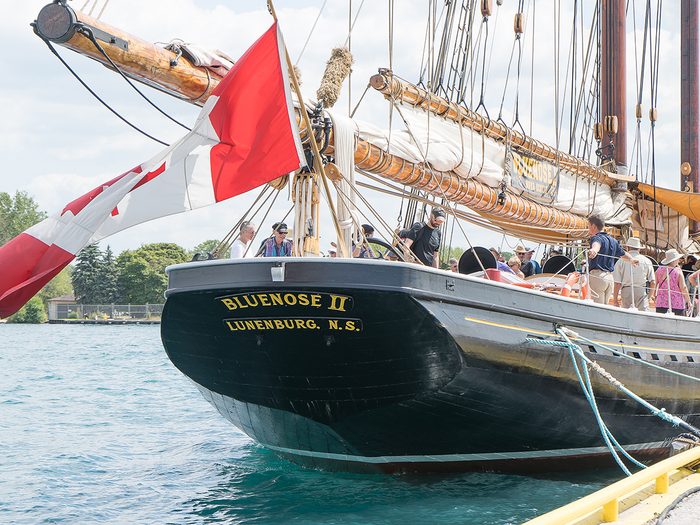
The Bluenose II never raced
Construction costs aside, the Oland family had not banked on how expensive it would be to maintain the ship. They ended up selling the Bluenose to the provincial government in 1971…for the token sum of one dollar. The government was eager to purchase the ship because of its cultural value, using it as a living museum of sorts; a showcase for Nova Scotia’s history of shipbuilding and fishing. Unlike its predecessor, the Bluenose II did not race, but offered tours to visitors and sailed to other ports on the east coast of Canada and the U.S. for trade purposes.
Planning to see the Bluenose II yourself? It’s one of the 10 best day trips from Halifax.
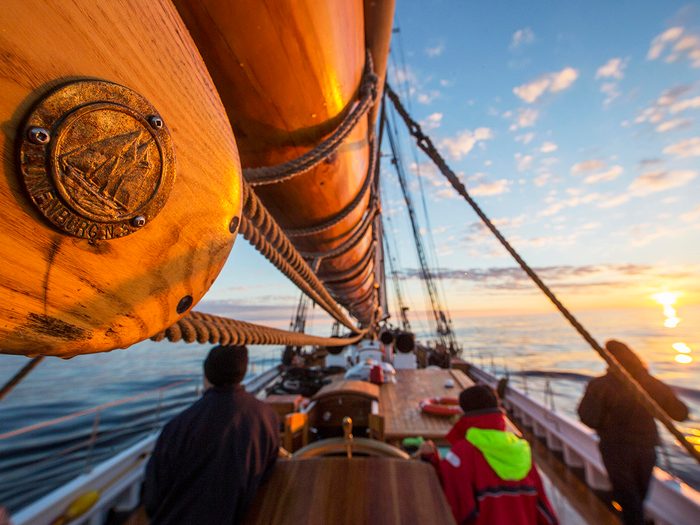
You can still visit the Bluenose II in the historic harbour of Lunenburg, Nova Scotia
The Bluenose II now spends the summer in its home waters of Lunenburg, Nova Scotia. There, it continues to serve as a popular tourist attraction, offering visitors the chance to learn about Canada’s maritime heritage with a daily schedule of harbour cruises.
Now that you know what happened to the Bluenose, check out the 10 historical landmarks every Canadian needs to visit.